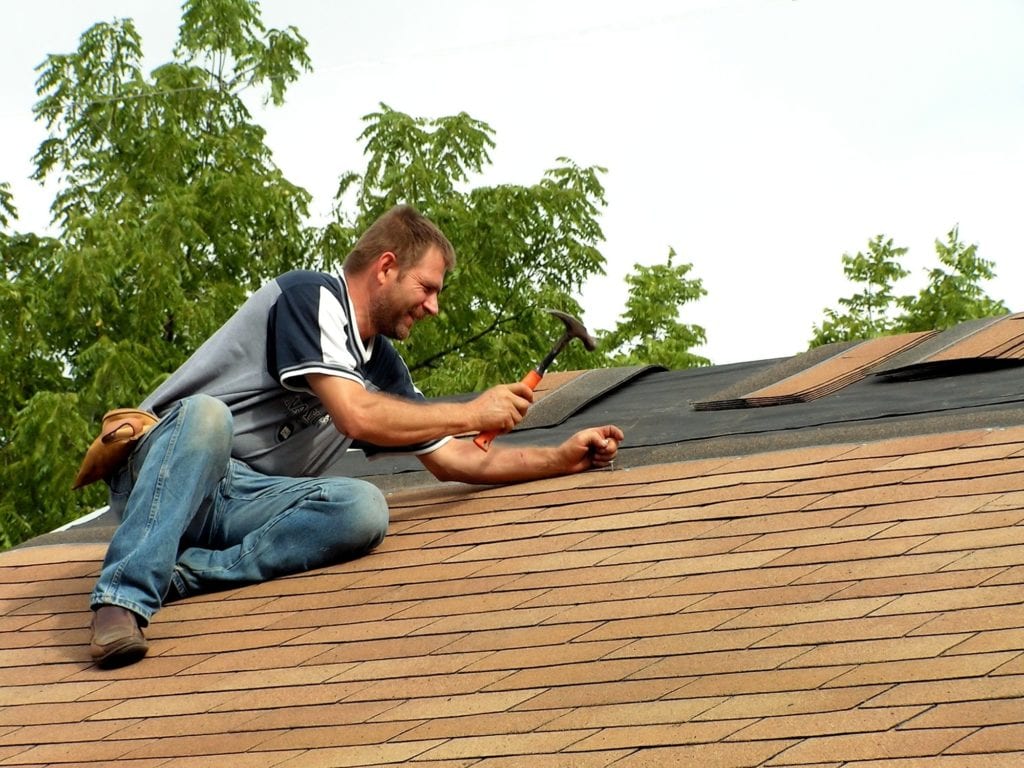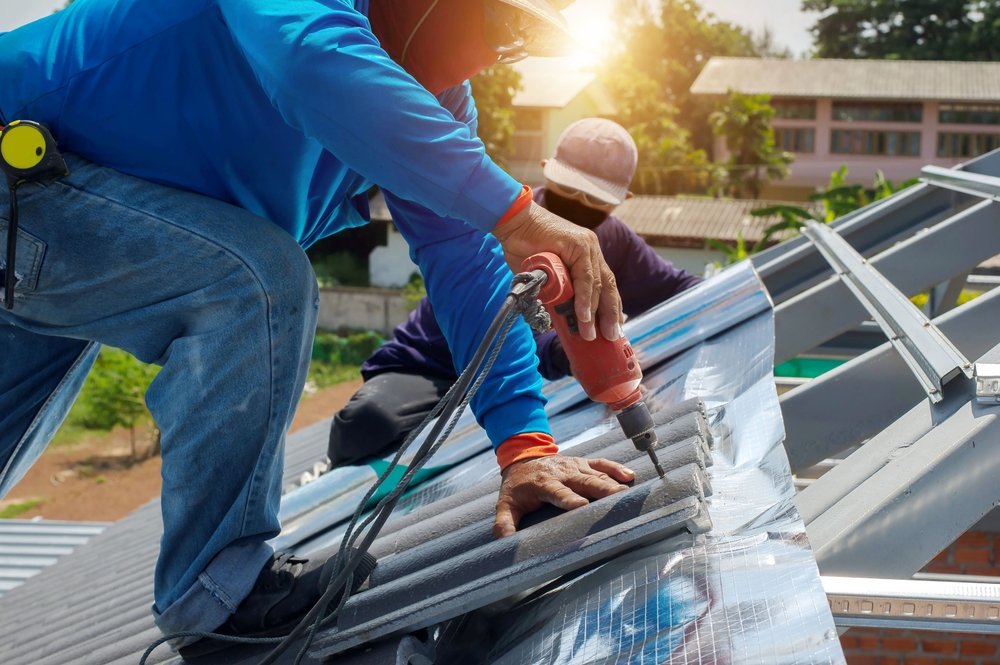Oahu Roofing: Reliable Roofing Solutions for Homes and Organizations
Oahu Roofing: Reliable Roofing Solutions for Homes and Organizations
Blog Article
Discovering the Different Kinds of Roofs: Which One Is Best for Your Home?
When thinking about the myriad kinds of roofs offered, it is vital to evaluate how each option lines up with your home's distinct requirements, including climate conditions, visual choices, and architectural performance. From the traditional gable roofing system that effectively networks rainwater to the contemporary level roof offering urban versatility, each style provides unique benefits and difficulties.
Gable Roofs
Saddleback roofs, identified by their triangular shape and sloping sides, are a preferred selection among property owners looking for both aesthetic appeal and capability. This roof style properly permits efficient water overflow, reducing the risk of water merging and subsequent damage. In addition, the high slopes create ample attic area, which can be made use of for storage or even exchanged living areas.
One of the main benefits of gable roof coverings is their ability to withstand harsh climate problems. The style helps in decreasing wind resistance, making them specifically appropriate for areas prone to tornados. Moreover, gable roofs can be built using a range of materials, including tiles, ceramic tiles, and metal, providing homeowners with versatility in style and spending plan.
From a building viewpoint, gable roofing systems can improve the visual appeal of a home, providing a timeless and traditional appearance. They can complement various architectural styles, from conventional to contemporary designs. Nonetheless, it is important to think about prospective downsides, such as the sensitivity to snow accumulation in cooler climates. On the whole, saddleback roofs remain a popular option as a result of their balance of practicality and style, appealing to a large range of home owners.
Flat Roofs
While typically forgotten for even more traditional roof covering designs, level roofings use special benefits that deal with specific building needs and contemporary design choices. These roofing systems are characterized by their very little pitch, permitting reliable use of area, especially in urban environments where making best use of square video is essential.
One substantial advantage of flat roofings is their convenience. They can be used as additional home, such as rooftop yards, patios, or solar panel installations, improving the performance of a home. Moreover, level roof coverings are generally simpler and much safer to navigate throughout maintenance, assisting in repairs and evaluations without the obstacles presented by steep inclines.
Level roofings can additionally be much more cost-effective in regards to materials and installation. With a simpler style, they frequently require fewer sources, equating into reduced labor prices. Nevertheless, it's important to think about drainage and waterproofing, as level roofing systems can be susceptible to pooling water otherwise appropriately developed.

Hip Roofs
Hip roofings stand apart for their stylish style and structural integrity, making them a prominent selection among home owners. Defined by inclines on all four sides, hip roofings supply a healthy aesthetic that matches various architectural styles - roof repair oahu. The symmetrical nature of these roofing systems helps to disperse weight equally, boosting security and resilience
One of the essential benefits of hip roofing systems is their ability to hold up against rough weather. The sloped surface areas assist in reliable water drainage and snow overflow, reducing the risk of leakages and architectural damage. Furthermore, the layout reduces wind resistance, making hip roof coverings less vulnerable to wind uplift compared to various other roofing kinds.


Dropped Roofing Systems
Lost roofs, unlike the intricacy of hip roofs, provide a minimal and streamlined design that allures to modern-day aesthetics. Defined by a single sloping surface area, dropped roof coverings are commonly made use of in modern design, yard sheds, and various other useful frameworks. This simplicity not only enhances visual charm yet also allows for reliable water overflow, making them appropriate for different environments.
One of the key benefits of shed roofings is their cost-effectiveness. With fewer products needed and a straightforward installation process, homeowners can save both money and time. The layout also permits the unification of huge home windows or skylights, advertising natural light and developing large interiors.
Nonetheless, it is necessary to think about the possible downsides, consisting of minimal insulation alternatives and the requirement for careful layout to stay clear of excessive heat buildup. In addition, shed roofs may not blend seamlessly with standard style, which might be a problem for some house owners.
Eventually, dropped roofs offer a practical and trendy roof service for those looking for modernity and effectiveness. When selecting a roofing system kind, examining individual visual choices and functional needs will certainly lead house owners to the most effective option for their unique requirements.
Mansard Roofings
Mansard roofings, defined by their distinct four-sided design, are a hallmark of French style that integrates elegance with capability. my sources This architectural style includes two inclines on each side, with the reduced slope being steeper than the top one. The unique setup permits extra space in the upper degrees, making it an ideal option for house owners seeking to take full advantage of functional location without expanding the structure's impact.
Among the significant advantages of a mansard roof is its adaptability. It can be adapted to different building designs, from standard to contemporary, improving the visual allure of any type of home. Additionally, the sufficient area created under the roofing system can quickly suit dormer home windows, which enable all-natural light and ventilation, further enhancing the convenience of the living area.
However, prospective homeowners should think about the upkeep requirements related to mansard roof coverings. The steep slopes can result in raised wear from weather direct exposure, requiring regular maintenances. Furthermore, installment costs might be greater contrasted to less complex roof covering designs because of the intricacy of building and construction. Ultimately, a mansard roofing system can be an outstanding option for those focusing on design and room.
Conclusion
Each roof design offers special advantages, such as the effectiveness of gable this website roofs, the contemporary allure of shed roof coverings, and the stability of hip roofings. Level roof coverings supply practicality for urban environments, while mansard roofings provide additional living space despite greater setup costs.
From the classic gable roofing system that effectively networks rainwater to the contemporary level roof offering urban flexibility, each design offers unique advantages and challenges (roof repair oahu). In addition, the design minimizes wind resistance, making hip roofs much less susceptible to wind uplift compared to various other roof covering types
Lost roofs, in contrast to the intricacy of hip roofs, offer a minimalist and structured layout that charms to modern-day aesthetics. Each roof covering style provides one-of-a-kind advantages, such as the effectiveness of gable roofs, the modern-day charm of shed roof coverings, and the security of hip roof coverings. Flat roofs provide usefulness for urban atmospheres, while mansard roofs supply added living room despite higher setup costs.
Report this page